Posts belonging to Category Tips for Engineers

January 31, 2018
|
Posted by Jon (admin)
I recently posted over at the micmodkits.com site about how to do the balanced rewire mod for the Pyle PDMIC78 & PDMIC58, which are two popular clones of the Shure SM57 and SM58. Check it out, if you haven’t already:
http://micmodkits.com/2018/01/12/balanced-rewire-mod-for-pyle-pdmic78-and-pdmic58/

 Categories: Recording, Tips for Engineers
Categories: Recording, Tips for Engineers

August 15, 2017
|
Posted by Jon (admin)
A few years ago, I blogged about a tom mic shootout that I conducted between two very popular mics for toms: the Sennheiser e604 and the CAD M179. At that time, I had been using the e604’s for recording my tom tracks and really wasn’t too thrilled with them. Meanwhile, I had been reading many positive reviews about what a great tom mic the CAD M179 made, so I ordered a pair to try them out. (more…)
 Categories: Drums, Live Sound, Recording, Reviews, Tips for Artists & Bands, Tips for Engineers
|
Categories: Drums, Live Sound, Recording, Reviews, Tips for Artists & Bands, Tips for Engineers
|  Tags: cad, e604, m179, mics, Sennheiser, tom
Tags: cad, e604, m179, mics, Sennheiser, tom

July 25, 2017
|
Posted by Jon (admin)
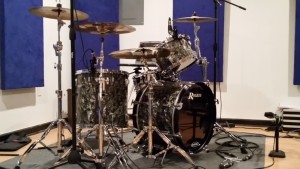
An all-important detail that isn’t mentioned in many articles about recording acoustic drums is how important it is to find the “sweet spot” in your room where the drums sound their best. I found this out the hard way. Since building my studio several years back, I’ve always set up the drums roughly centered along one of the longer walls (my room is 24′ x 22′), with the drummer’s back to the wall. This just seemed to be the logical place to set them up. It allowed me plenty of room to work around the kit when setting up the mics, allowed good visual communication between the drummer and the other band members, and it kept the kit somewhat out of the way for when people walk through the live room to the control room (which is on the opposite end of the building from the front door). It also allowed my own band plenty of room to set up a guitar amp on one side of the kit and a bass amp on the other for rehearsals, since that’s how things would normally be set up on stage during a live performance. (more…)
 Categories: Bands, Drums, Recording, Tips for Artists & Bands, Tips for Engineers
|
Categories: Bands, Drums, Recording, Tips for Artists & Bands, Tips for Engineers
|  Tags: Drums, Recording, sweet spot
Tags: Drums, Recording, sweet spot

April 8, 2016
|
Posted by Jon (admin)
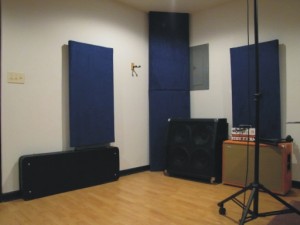
A while back, I received an e-mail from a friend asking me about acoustic treatment options for a practice room that he is setting up in the basement of his home. He plays the drums and guitar, and he said that the reflections in the room were terrible. Knowing that I had spent a lot of time and money on treating my studio, he was curious about what I had used, and what I would recommend that he do for his room. (more…)
 Categories: Recording, Tips for Artists & Bands, Tips for Engineers
|
Categories: Recording, Tips for Artists & Bands, Tips for Engineers
|  Tags: acoustic, band, fiberglass, foam, panels, Recording, rehearsal, space, studio, treatment
Tags: acoustic, band, fiberglass, foam, panels, Recording, rehearsal, space, studio, treatment

April 5, 2016
|
Posted by Jon (admin)
One of the most challenging aspects of building a recording studio is knowing what equipment to buy and when. Where do you start? What should you sink most of your money into early on? The sky is the limit when it comes to how much money you can spend, so it can be very difficult to know what to buy first–should you buy a great mic and a mediocre preamp, or a great preamp and a mediocre mic? What about converters? Should you invest more in high-quality converters early on, or save that investment for later? (more…)
 Categories: Recording, Tips for Artists & Bands, Tips for Engineers
|
Categories: Recording, Tips for Artists & Bands, Tips for Engineers
|  Tags: budget, buying, decisions, gear, Recording, strategy, studio
Tags: budget, buying, decisions, gear, Recording, strategy, studio

February 11, 2016
|
Posted by Jon (admin)
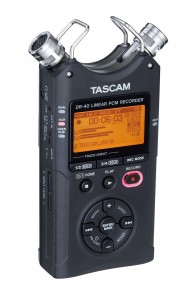
I’ve been using a Tascam DR-40 portable recorder for over a year now to record our band reharsals and services each week at church. After each rehearsal, I import the recorded audio into my DAW, export each song as an MP3, and e-mail those MP3’s to the other members of the band so we can evaluate our parts, practice them, and listen to the songs to help commit any new ones to memory. I’ll often do the same thing after our services, just so we can listen back and hear how everything sounded out front during the service. I also want to begin posting the pastor’s sermon each week on the church website, but recording the sermon with the DR-40 has brought some challenges (more on that in just a moment). (more…)
 Categories: Live Sound, Recording, Tips for Engineers
|
Categories: Live Sound, Recording, Tips for Engineers
|  Tags: audio, church, DR-40, DR40, H4N, Recording, sermons, services, Tascam, Zoom
Tags: audio, church, DR-40, DR40, H4N, Recording, sermons, services, Tascam, Zoom

May 30, 2014
|
Posted by Jon (admin)
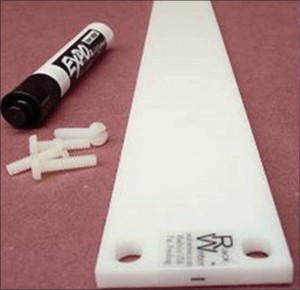
In my studio rack, I now have one dual-channel and three 8-channel rackmount mic preamps (for a total of 26 inputs) that I use for recording all of the vocals and instruments. One of the challenges to any session is remembering which mic is connected to which preamp. On more than one occasion, I’ve found myself twiddling a Gain knob to no avail, only to realize that I grabbed the wrong knob by mistake. So the thought occurred to me–wouldn’t it be nice if I could label each preamp channel somehow, so that I could easily see which one I was actually adjusting? (more…)
 Categories: Recording, Reviews, Tips for Engineers
Categories: Recording, Reviews, Tips for Engineers

November 4, 2013
|
Posted by Jon (admin)
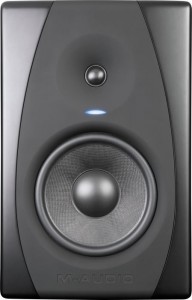
One of the things I love about recording is the passion that other recording enthusiasts have for it. If you’ve frequented any of the popular recording forums (TapeOp, Gearslutz, Homerecording, etc.), you’ll find some very colorful discussions about what gear is best and how best to use it. Occasionally, I’ll discover that there’s a whole mythology that has developed around a certain recording technique (e.g., the “Recorderman” overhead mic placement on drums) or a certain “best practice” that people either swear by, or swear at. Such is the case with whether or not to “burn-in” new studio monitor speakers. (more…)
 Categories: Recording, Tips for Engineers
|
Categories: Recording, Tips for Engineers
|  Tags: burn in, burning in, monitor speakers, new studio monitors
Tags: burn in, burning in, monitor speakers, new studio monitors

November 4, 2013
|
Posted by Jon (admin)
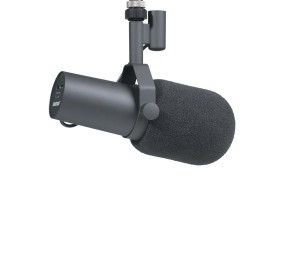
Originally released in 1976, the Shure SM7B has become the stuff of recording legend. It was the mic that was used to record the vocals on the best-selling album of all time: Michael Jackson’s Thriller. It’s still the preferred vocal mic in the studio for many famous Rock vocalists. You’d be hard-pressed to find a recording forum without dozens of threads about the SM7B, and how every engineer should own one. The demand for these mics is so great that you’ll pay almost as much for a used one as you would to buy a new one. (more…)
 Categories: Recording, Reviews, Tips for Engineers
Categories: Recording, Reviews, Tips for Engineers

June 5, 2012
|
Posted by Jon (admin)
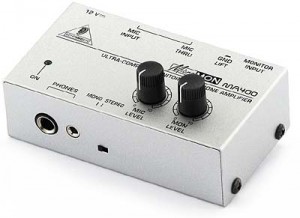
One of the challenges that any engineer faces when recording vocals in the studio is creating a good mix in the headphones for the singer. The goal is to create a nice balance between the singer’s voice (which is being monitored directly from the microphone) and the rest of the recorded mix (the drums, guitars, bass, keys, other vocal tracks, etc.). If the singer can’t hear enough of their own voice in the headphones, they will have a tendency to go off pitch or sing too loudly into the mic. On the other hand, if they hear too much of their voice in the headphones (and not enough of the mix), they will often not be locked in well with the music and sing too softly, therby creating a weak performance. (more…)
 Categories: Recording, Tips for Engineers
|
Categories: Recording, Tips for Engineers
|  Tags: Behringer MA400, monitoring, recording vocals, studio
Tags: Behringer MA400, monitoring, recording vocals, studio

 January 31, 2018
|
Posted by Jon (admin)
January 31, 2018
|
Posted by Jon (admin)
 Categories:
Categories:  Tags:
Tags: 






